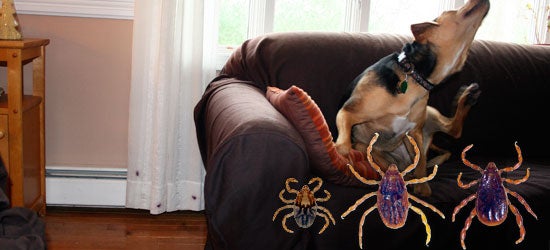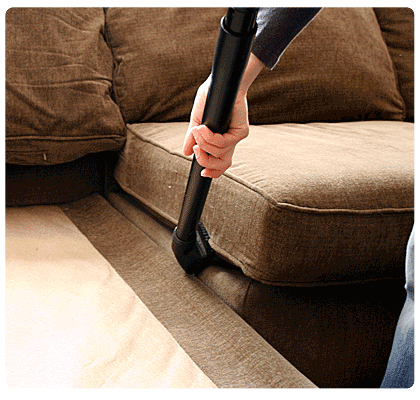November 21, 2011
We’ve gotten a number of letters with pleas for information that often go something like this one:
[S.E. , Commerce City CO]: “We removed about 10 ticks from our small Chihuahua on October 2 but didn’t know what they were. Three days before finding the ticks on the dog I found a tick crawling up our wall. Not knowing what it was, I discarded the weird creature. I’ve since been told they are “Rocky Mountain ticks” and I’ve found them on our computer desk, in the bathroom, on the kitchen curtain, on the baby’s playpen, and even on the baby. Some are small, but one found crawling up the wall in my son’s bedroom was full grown but flat, not blood fed. Where did they come from and how do I get rid of these horrible things. This infestation is driving me up the wall!!”

[TickEncounter]: While most ticks live outdoors and occasionally make it into the house, this sounds like brown dog ticks (Rhipicephalus sanguineus) which are the only tick that more typically completes its lifecycle entirely inside of the house or kennel. This tick prefers warm, dry conditions and mainly feeds on dogs. A house infestation usually begins when one or two brown dog ticks come home from a kennel or other infested area on the pet dog. When the infestation is in its early stages, few ticks are present and they largely go unnoticed. This situation can change relatively quickly—one to 3 months after the ticks came in with the dog. As the infestation builds, ticks of different sizes are usually seen biting the dog and crawling up the walls and curtains.
Getting an infestation under control may take several months and several treatments. It probably is best to call in a trained professional with experience controlling brown dog tick TERC recommends a 4-step process:

-
TREAT THE PETS – Keep all pets in the household treated with topical tick killing products that contain fipronil, amitraz or permethrin.
-
TREAT THE HOUSE – Use products with residual activity that are labeled for control of brown dog tick inside. Synthetic pyrethroid products with the active ingredients bifenthrin or esfenvalerate are often used to treat cracks, crevices, dog bedding and bedding areas, carpet, crawl spaces, and kennel areas. Always follow all label instructions and take all recommended precautions if making the applications yourself. Never apply these products directly on the pet.
-
TREAT THE YARD – Synthetic pyrethroids including bifenthrin or esfenvalerate can be applied to outdoor areas, concentrating on areas frequented by the pet, including under porches and stairs, shady areas under trees and bushes, and even lawn areas. Repeat treatments may be needed at 7 to 14 day intervals. Do not apply directly on pets, and keep pets and children away from treated areas until the product has dried.
-
SANITATION – vacuum, vacuum, vacuum! Concentrate on areas frequented by the pets. Furniture, cracks and crevices in floors, baseboards, walls, even crown molding. Remember that all ticks crawl up, even brown dog ticks. Also remember to dispose of the vacuum bag.
To prevent brown dog tick infestations in your home, always be sure to protect your pet using an appropriate topical tick killer, especially before taking it to be kenneled.
